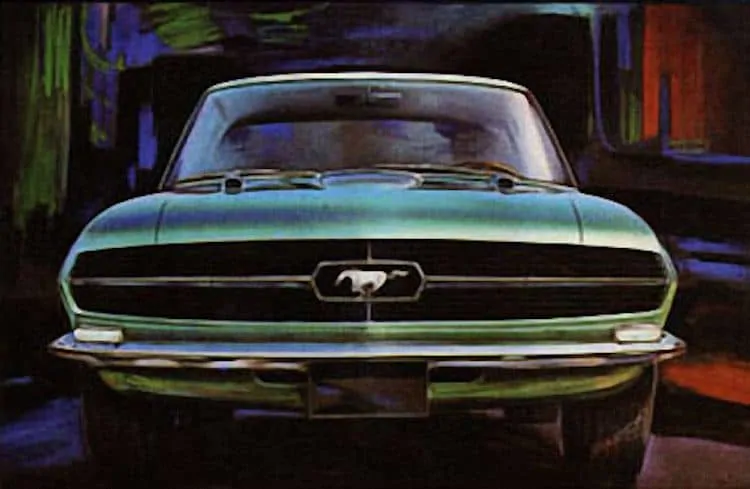Many of you undoubtedly know of the many cars included in Giorgetto Giugiaro’s portfolio. There are numerous concept and production designs for nearly every automaker in the world — from Alfa Romeo, Bugatti and Fiat to Hyundai, Lotus and Volkswagen. Before starting his own consultancy, he worked in-house for Fiat, Bertone and, later, Ghia.
Besides his creations at Italdesign, aficionados will also remember his time at Bertone, where he created the Alfa Romeo 2600, BMW 3200CS, Fiat 850 Spider and, in 1965, a one-off Mustang for Automobile Quarterly magazine. The car, which was unmistakably Italian in its interpretation, became the first European-designed car to make its international debut in America following the end of World War II.
Commissioned by Automobile Quarterly founder and editor L. Scott Bailey as a response to some criticism the newly debuted Ford Mustang had received from the European press, the car started life as a ’65 red 2+2 fastback, straight off the production line. It had a 289 V8, four-speed manual, whitewall tires and wire hubcaps. Alitalia Airlines came on as a partial sponsor and shipped the car to Turin for its meeting with Nuccio Bertone and his newest design talent, Giugiaro.
While the Mustang retained its stock original dimensions, the Giugiaro design called for a lower, more aerodynamic front end with louvered headlights and a greenhouse with slim window pillars. Giugiaro also designed two small additional rear side windows that could be raised and lowered, something no Mustang then or since has had. The stock Mustang’s sail panels and relatively flat backlight were replaced with a large, single-piece curved and steeply raked piece of glass.
The interior was also completely rethought and redone in supple Italian caramel-colored leather. The stock shifter was reused and, in a particularly interesting design twist, the two elements of a factory Rally Pac (clock and tach) were repurposed from their normal, steering-column mounting position to become built-in instrumentation now recessed in the console’s center stack.
The factory stock wheels and hubcaps where replaced by 14-inch Campagnolo wheels designed by Bertone and cast of lightweight Elektron magnesium alloys and the car was painted an elegant, metallic silvery blue/green that complimented its new subtle curves.
The Bertone Mustang by Giugiaro was such a resounding success that when it made its debut at the New York auto show in 1965 it won the coveted Best of Show award.
Not long after its appearance, it was advertised for sale, for $10,000, directly by Bertone. Although there’s no record it was ever sold, it was not in the company’s collection when the carrozzeria closed and was liquidated in 2014.
The car, considered a priceless piece of automotive history, just disappeared, and remains unaccounted for today.












